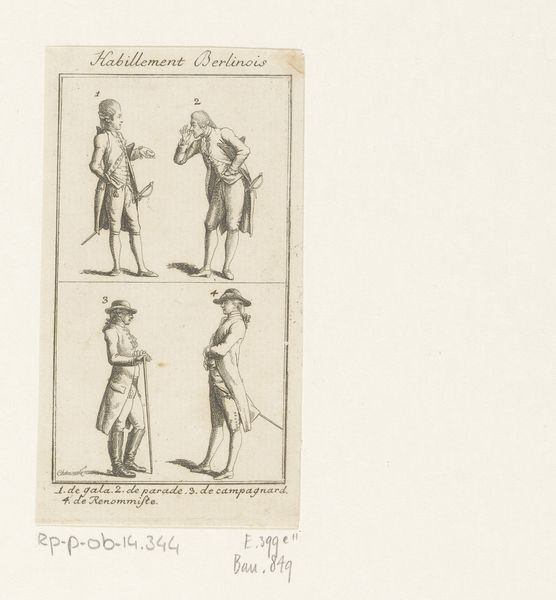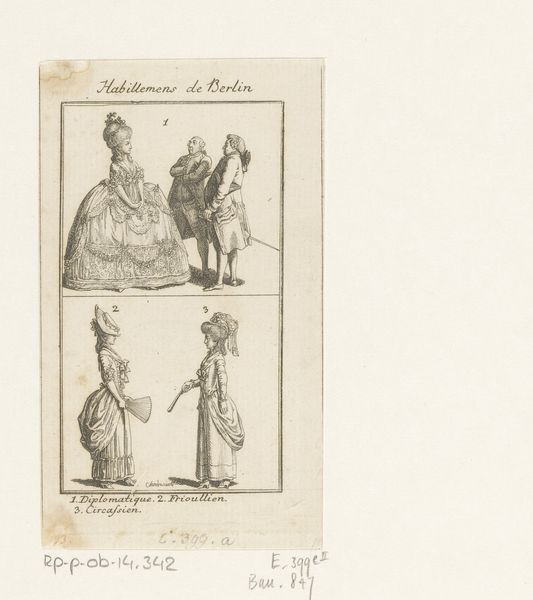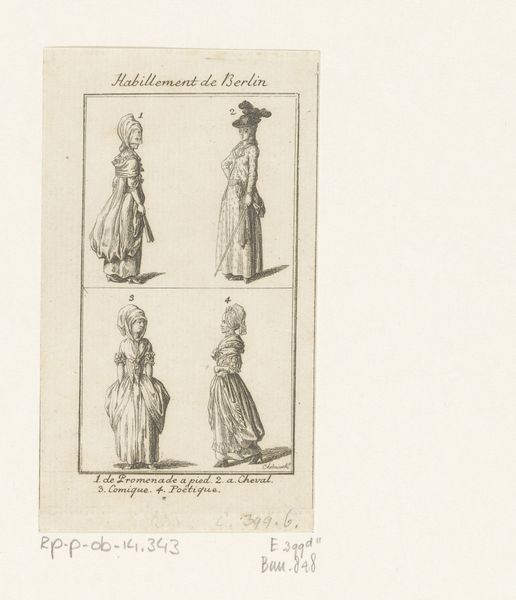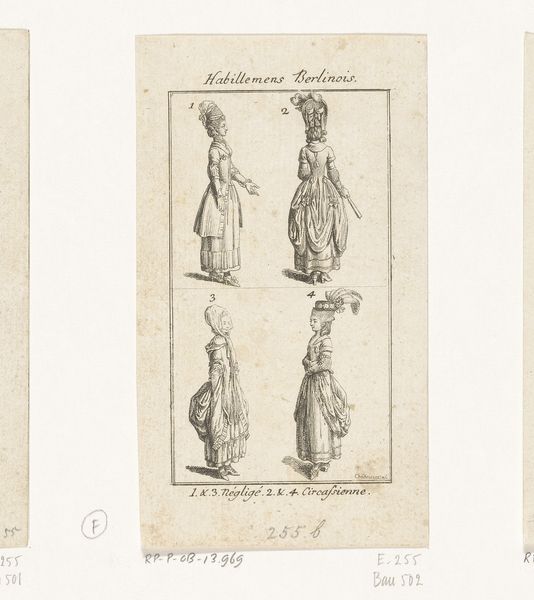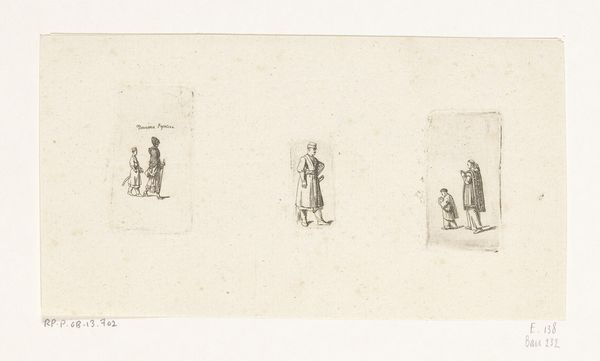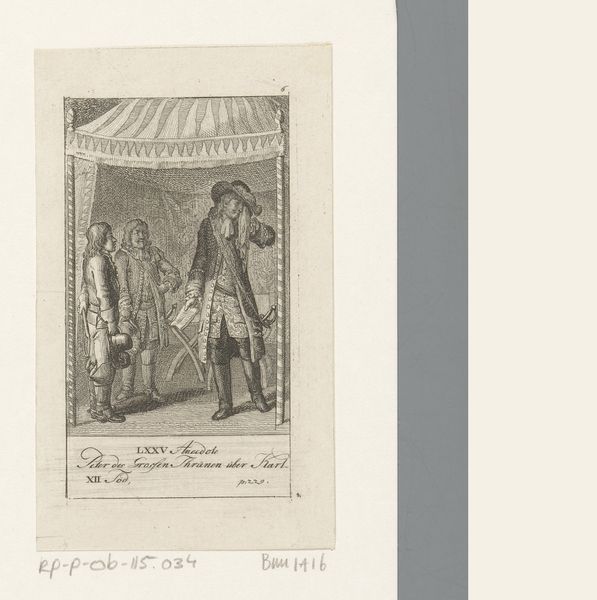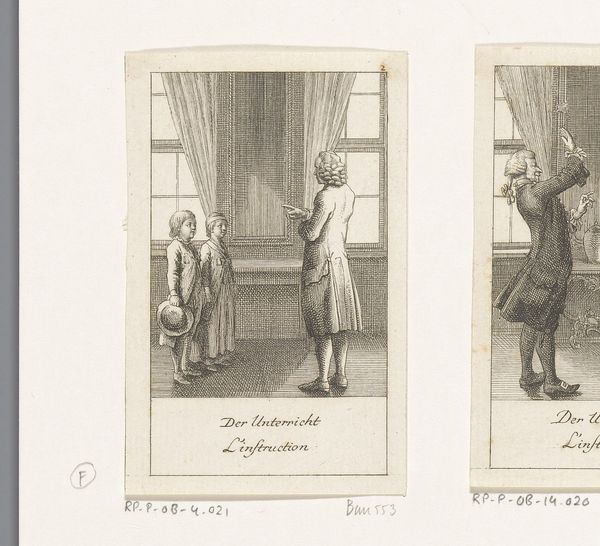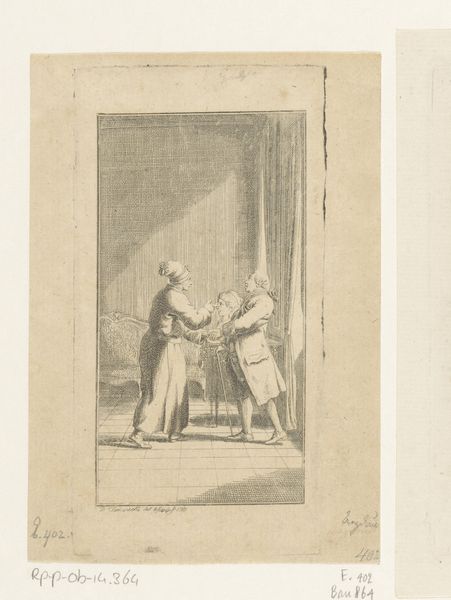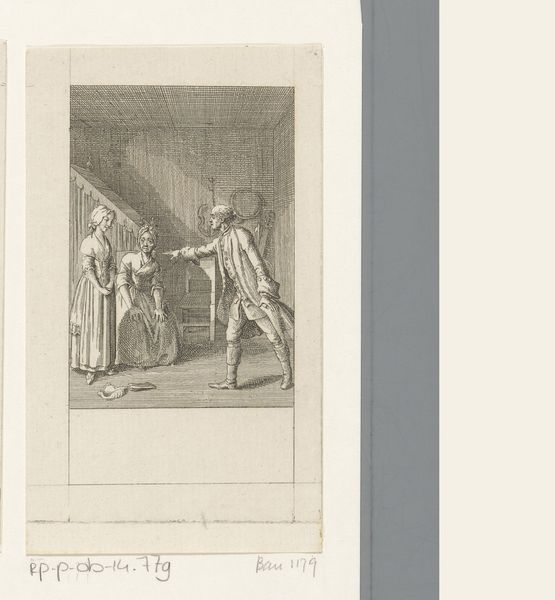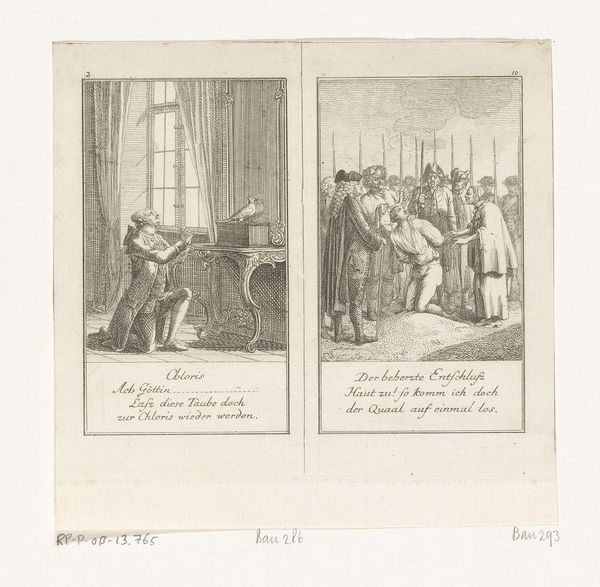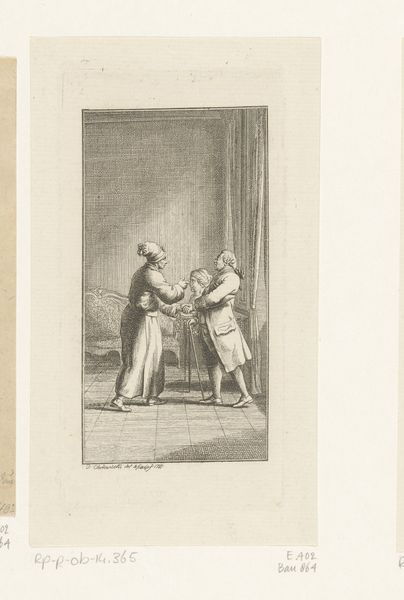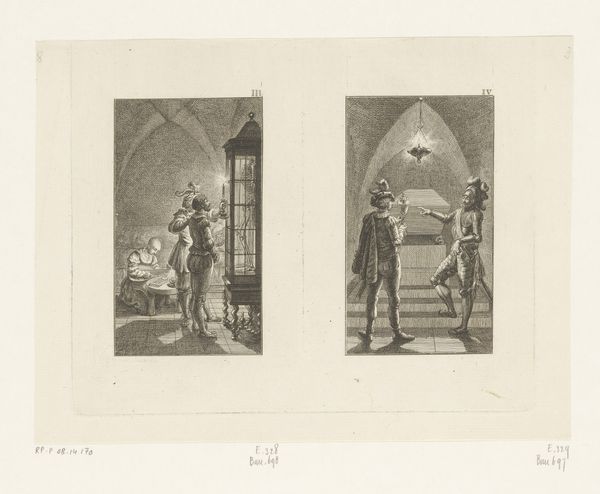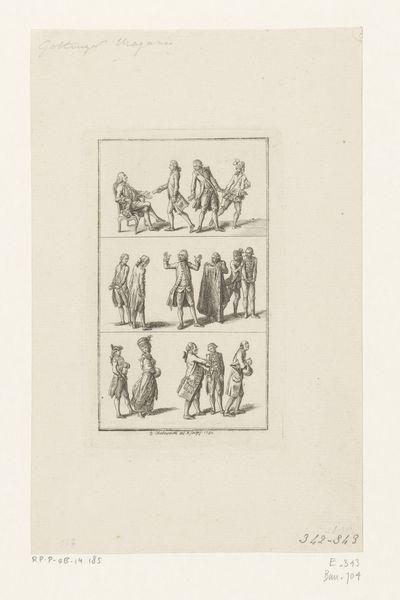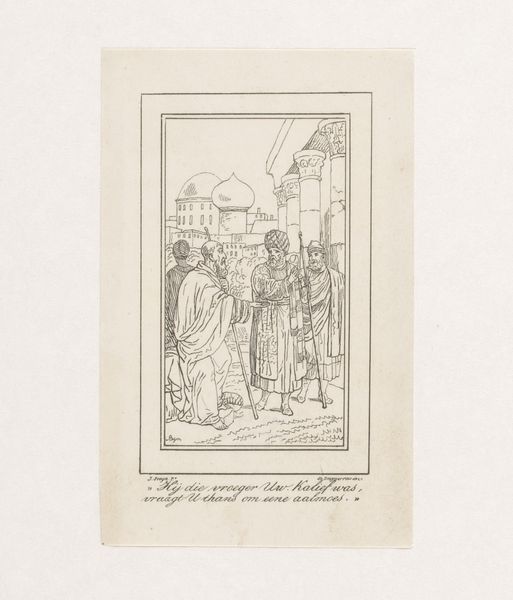
drawing, print, etching, engraving
#
portrait
#
drawing
# print
#
etching
#
figuration
#
line
#
genre-painting
#
history-painting
#
engraving
Dimensions: height 121 mm, width 73 mm
Copyright: Rijks Museum: Open Domain
This print, made by Daniel Nikolaus Chodowiecki in the late 1700s, showcases four men's suits using etching. This intaglio printmaking technique involves using acid to cut lines into a metal plate, which then holds ink and transfers the design onto paper. Chodowiecki’s expertise in etching allowed him to capture the intricate details of each garment. Notice the precise lines defining the tailoring, the folds of the fabric, and the delicate embellishments. This wasn’t just art for art's sake. Prints like this circulated widely, playing a key role in disseminating fashion trends. The clothing industry was rapidly evolving during this period, driven by emerging capitalist systems of production and distribution. Consider the social implications embedded in these depictions of style. The materials, cut, and adornment of these garments signify status and wealth. It’s a world away from homespun cloth. Here, we see the rise of a consumer culture, where personal identity and social standing are increasingly tied to what one wears. In this way, Chodowiecki’s print is not only an artwork but a vital document of its time.
Comments
No comments
Be the first to comment and join the conversation on the ultimate creative platform.
